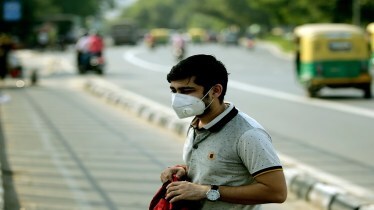With pollution set to increase in the coming months, extra protection is needed. Dr Viny Kantroo, senior consultant, respiratory, critical care and sleep medicine consultant, Indraprastha Apollo Hospitals, New Delhi, says air pollution, in particular, can have detrimental consequences for respiratory and cardiovascular health, and it’s essential to take proactive measures to safeguard well-being. Some of them are:
- Wear masks
- Limit outdoor activities
- Indoor air purification
- Proper ventilation
- Reduce personal emissions
- Stay informed
- Diet and hydration
- Exercise indoors
- Advocate for change
- Preventative health measures
Is it just lungs that are affected? How does pollution affect other organs?
While pollution’s impact on the lungs is well-documented, it’s essential to recognise that other organs can also suffer significant harm due to exposure to various pollutants. Air pollution, in particular, is a complex mixture of particulate matter, gases and toxic chemicals that can affect multiple systems in the body.
- Cardiovascular system: Pollution, especially fine particulate matter (PM2.5), can enter the bloodstream through the lungs, causing inflammation and oxidative stress. This can lead to atherosclerosis, high blood pressure, and risk of heart attacks and strokes.
- Brain: Studies suggest that air pollution may contribute to cognitive decline and neurological disorders. Fine particulate matter can enter the brain, leading to inflammation and oxidative damage, potentially increasing the risk of neurodegenerative conditions.
- Liver and kidneys: Air pollution can strain the liver and kidneys, as they are responsible for detoxifying the body. Prolonged exposure to pollution may impair their functions and contribute to various metabolic disorders.
- Skin: Pollution can lead to skin aging, acne, and other dermatological issues. Ozone, in particular, can cause skin inflammation and exacerbate existing skin conditions.
- Reproductive health: Emerging evidence suggests that air pollution may affect fertility in both men and women and may lead to adverse pregnancy outcomes such as low birth weight.
- Endocrine system: Some pollutants, known as endocrine disruptors, can interfere with hormone function, potentially leading to reproductive and developmental issues.
What constitutes a pollution emergency in terms of symptoms?
A pollution emergency can be characterised by a range of symptoms that indicate the severity of exposure to hazardous pollutants. Common signs of a pollution emergency include:
- Respiratory distress: Shortness of breath, coughing, wheezing and chest tightness are typical symptoms. Severe exposure can lead to acute respiratory distress syndrome (ARDS), which is life-threatening.
- Cardiovascular issues: Palpitations, chest pain and a sudden increase in blood pressure may occur. Severe pollution exposure can lead to heart attacks or exacerbate existing heart conditions.
- Dizziness and headaches: Nausea, dizziness, and severe headaches are common, particularly when pollutants like carbon monoxide are involved. These can lead to loss of consciousness in extreme cases.
- Eye and skin irritation: Irritation of the eyes, skin rashes, and redness can result from exposure to certain pollutants, including particulate matter and toxic gases.
- Fatigue and weakness: Pollution emergencies often cause profound fatigue and weakness. Prolonged exposure may lead to chronic fatigue and decreased quality of life.
Neurological symptoms: Cognitive impairment, memory problems and mood changes may occur due to inflammation in the brain caused by pollution. - Gastrointestinal distress: Nausea, vomiting and diarrhea can be symptoms of severe pollution exposure, especially when toxic chemicals are involved.
- Exacerbation of preexisting conditions: Individuals with preexisting respiratory diseases like asthma or chronic obstructive pulmonary disease (COPD) may experience severe exacerbations, requiring immediate medical attention.
